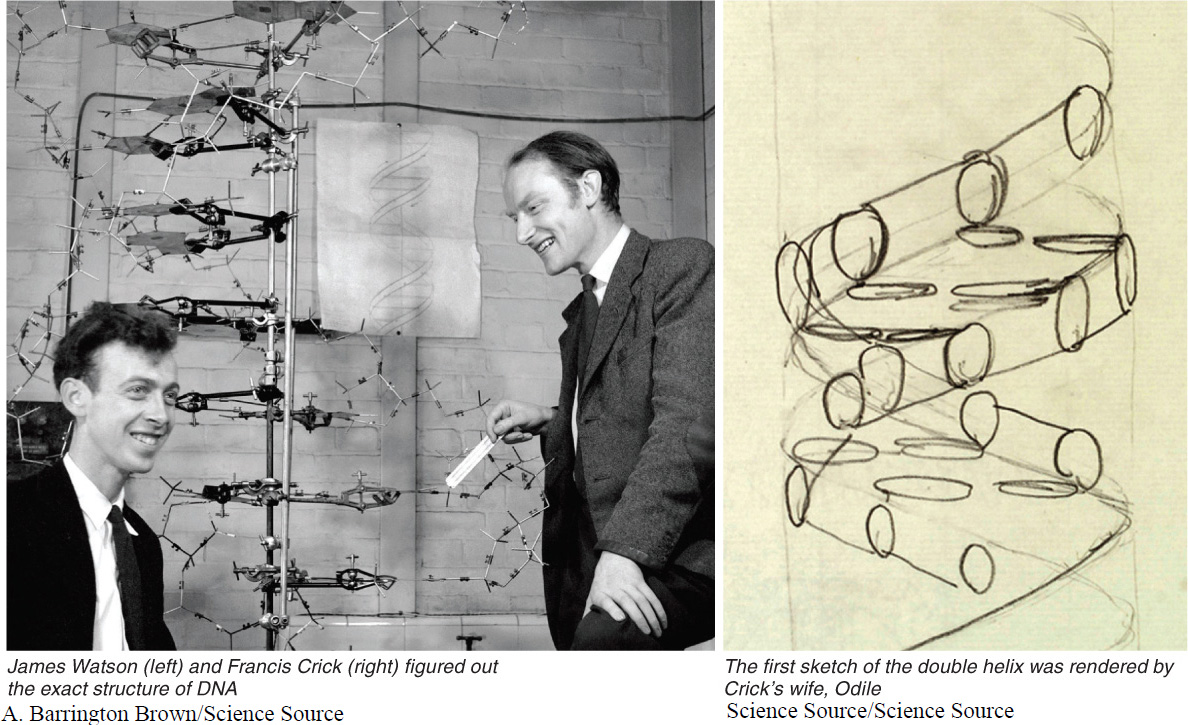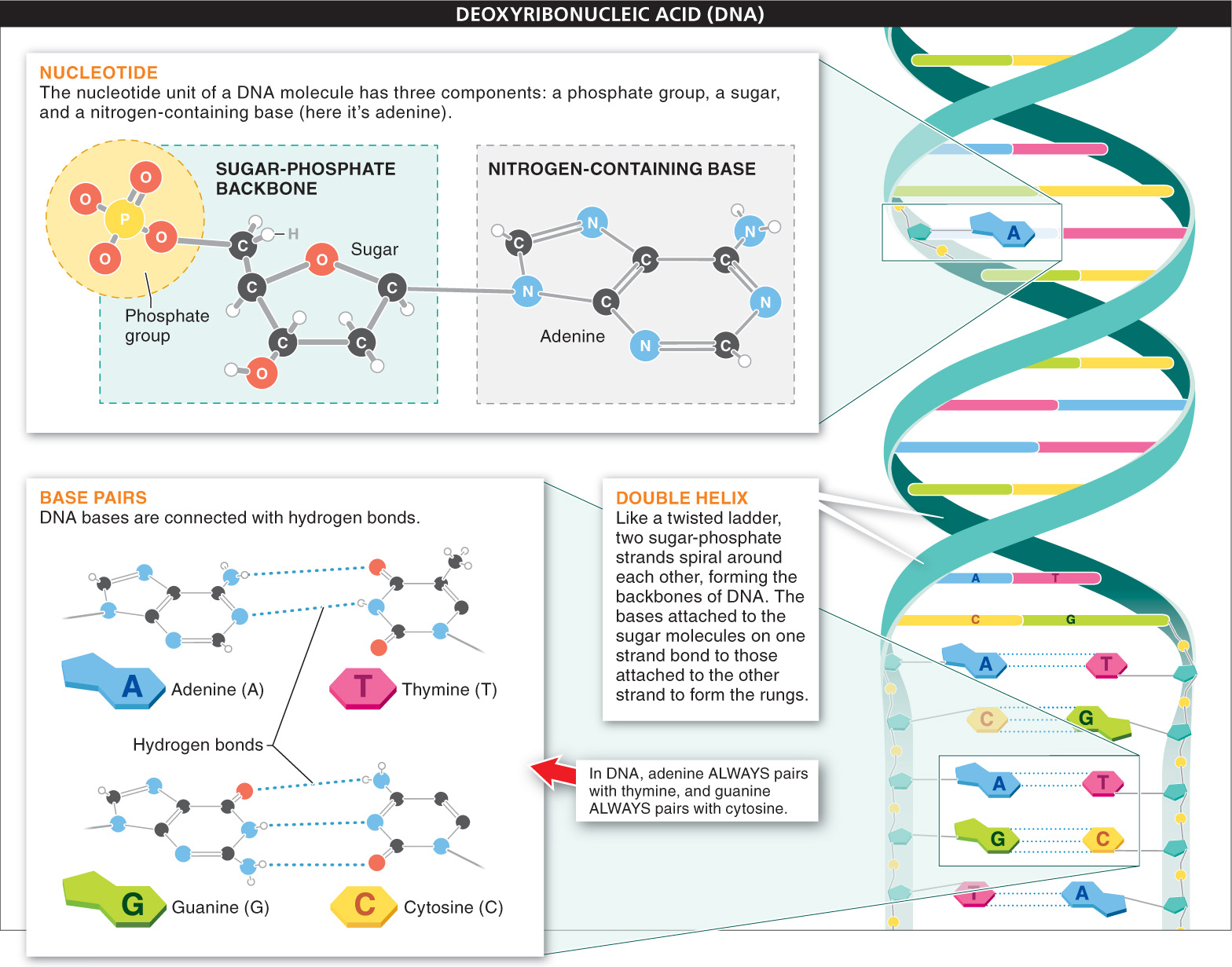Beginning in the 1900s and continuing through the early 1950s, a series of experiments revealed two important features of DNA. First, molecules of DNA are passed down from parent to offspring. Second, the instructions on how to create a body and control its growth, development, and behavior are encoded in the DNA molecule.
Given that DNA must be able to hold the instructions for how to produce every possible type of structure in every living organism, scientists were in a frenzy to learn all they could about it. There was a spirited race to determine the chemical structure of DNA and to understand how the molecule was assembled and shaped so that it could hold and transmit so much information.
Many formidable scientists rose to the challenge of determining the structure of DNA. American Linus Pauling had already won a Nobel prize in chemistry for his work on elucidating the structure of molecules when he began investigating the structure of DNA. Simultaneously, Maurice Wilkins and Rosalind Franklin in England devoted their research to this task as well, and produced X-

180
As we’ll see later in this chapter, their discovery was more than just a description of a molecule. As soon as they figured out DNA’s structure, the answers to several other thorny problems in biology—
DNA (deoxyribonucleic acid) is a nucleic acid, a macromolecule that stores information. It consists of individual units called nucleotides, which have three components: a molecule of sugar, a phosphate group (containing four oxygen atoms bound to a phosphorus atom), and a nitrogen-

The alternating sugars and phosphates hold everything in place, but they play only a supporting role. The rungs of the ladder are where things get interesting. Attached to each sugar, and protruding inward like half of a rung on the ladder, is one of four nitrogen-
Both backbones of the ladder have a base protruding from each sugar. The base on one side of the ladder binds, via hydrogen bonds, to a base on the other side, and together these base pairs form the rungs of the ladder. They don’t just pair up at random, though. Every time a C protrudes from one side, it forms hydrogen bonds with a G on the other side (and vice versa: a G always bonds to a C). Similarly, every time a T protrudes from one side, it forms hydrogen bonds with an A on the other side (and vice versa). For this reason, each DNA molecule always has the same number of Gs as Cs, and the same number of As as Ts. Because of these base-
181
If a human DNA molecule were really a twisted ladder, it would be a very, very long one. One molecule of DNA can have as many as 200 million base pairs, or rungs. How does such a molecule fit into a cell? The rungs are small, and the twisting of the molecule—
TAKE-HOME MESSAGE 5.2
DNA is a nucleic acid, a macromolecule that stores information. It consists of individual units called nucleotides, which consist of a sugar, a phosphate group, and a nitrogen-
What are the three components of a nucleotide? Which of these components interacts with components of the other strand of a double-
A nucleotide consists of a sugar, a phosphate group, and a nitrogen-containing base. The nitrogen-containing bases of one strand of DNA interact through hydrogen bonds with the bases on the opposite strand.
182